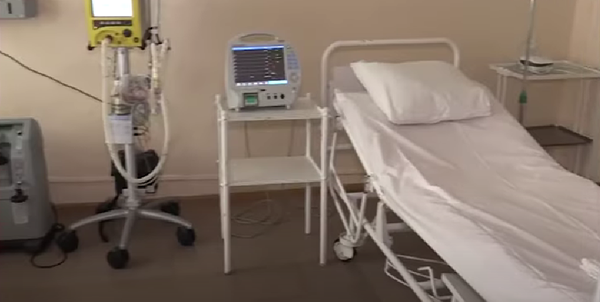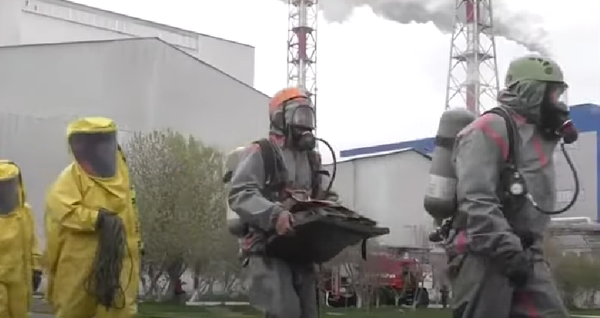Scenarios and consequences of a possible Russian sabotage at the Zaporizhzhia NPP
The Russians planted mines in the cooler at the Zaporizhzhia NPP, and its possible damage will result in huge problems, said Kyrylo Budanov, the head of the Main Directorate of Intelligence (MDI) of the Ukrainian Ministry of Defence. Experts talked about the consequences of the probable terrorist attack in the video story of Donbas News. TEXTY present the key conclusions of experts below.
Translated by Dmitry Lytov
"The nuclear power plant was additionally mined. And the worst thing is that the cooler itself was mined," said the head of the MDI. According to him, if the Russians disable the cooler by detonation, there is a high probability that there will be significant problems.
This is exactly the strategy the Russians are planning, realizing that they will have to leave the territory of the nuclear power plant. Experts believe that the occupiers replaced the stoplog gates of the cooling pond.
On June 11, Russian divers worked in the pond under the pretext of carrying out planned work. The Russian occupiers stated that they had carried out work on the territory of the ZNPP "to seal the stoplog gates and clean the head of the technical water well."
The collegium of the State Inspection of Nuclear Regulation has been recording the facts of the preparation of the provocation since May. The Russians began to install additional beds in hospitals in case of nuclear damage to people. In addition, they conducted a series of drills with an accident scenario at the ZNPP.

"They are preparing a provocation. If they have to leave the ZNPP, then they can remotely detonate the mines in one or two days, when our troops and the personnel arrive at the nuclear plant, and release all the water. Then the station will have no water to cool the reactor. The riskiest is the fifth unit, which is in a state of hot shutdown," says nuclear energy expert Olha Kosharna.
In the hot stop mode, much more water will be needed for cooling than in the cold state. According to experts, the fact that the occupiers did not put this unit into a cold shutdown mode is evidence of their potential intentions to cause a disaster. After detonation of the cooling pond, it will take a little more than a day before the accident begins. In the cold shutdown mode, this time would be about 8 days, but in the hot shutdown mode, this time narrows to 27 hours, Kosharna says.

The Russians, having destroyed the Kakhovka HPP, have already destroyed access to coolers at the ZNPP. If the water level in the Dnipro falls below the water intake, it may happen that the pumps will no longer be able to pump water into the pond. The level of 12.5 meters was previously thought to be critical, but IAEA observers reported that the pumps are still working, even though the water has dropped below this level.
Undermining strategic objects is a classic tactic in Russian history. "This is a typical Soviet tactic, when you mine everything that can harm the enemy. From the Russian perspective, Ukraine is the enemy, so they mine everything that can delay the Ukrainian counteroffensive or, ideally, stop it. Therefore, you can be sure that dams, bridges – all this will be mined and possibly blown up," says Ivan Stupak, a consultant to the Verkhovna Rada Committee on National Security and Defense.
He adds that the Russians expect that only Ukraine will be affected by the consequences of a terrorist attack on the Zaporizhzhia NPP, but they "will not reach Moscow." "That's their poor calculation. They don't take into account the wind rose, which, God forbid, can turn this whole cloud to any point on the globe: either to Turkey or to Rostov, or maybe even Moscow.
Experts believe that there are more chances to cause a disaster at the ZNPP by damaging its architecture, because it is extremely difficult to blow up the reactor due to the huge mass of concrete and steel. It is much larger than the one at the Chernobyl NPP.
"In the event of a severe accident [at the ZNPP] with the melting of the active zone, it will have a higher level on the INES scale, like Chernobyl, number 7, but it will be like the Fukushima disaster by its consequences," says Olha Kosharna.
However, according to her, Ukrainian nuclear scientists, together with American and French experts, have already prepared a number of action scenarios on how to prevent an accident when the Armed Forces liberate Enerhodar, in case the Russians still manage to blow up the cooling pond and the ZNPP remains without water.

